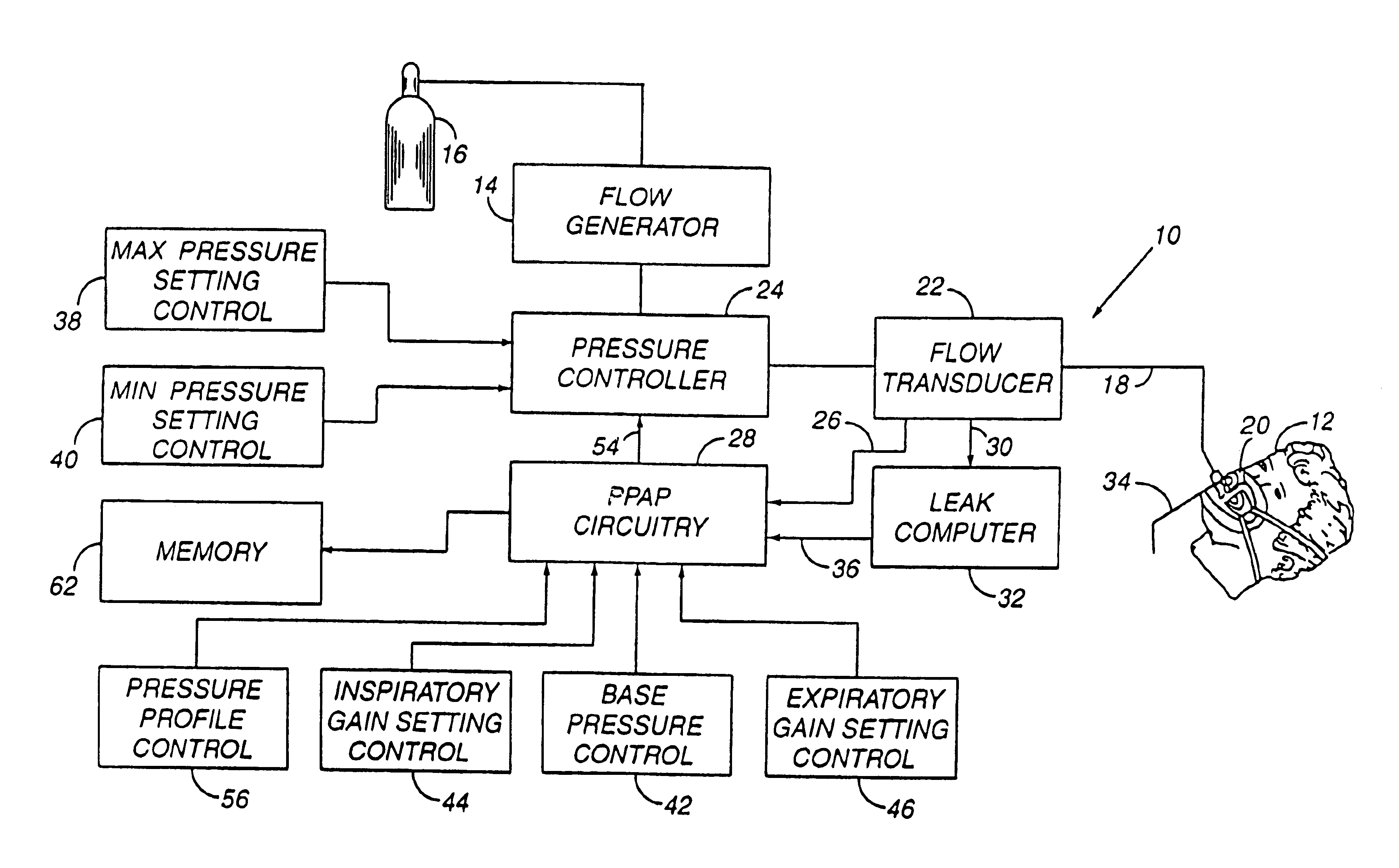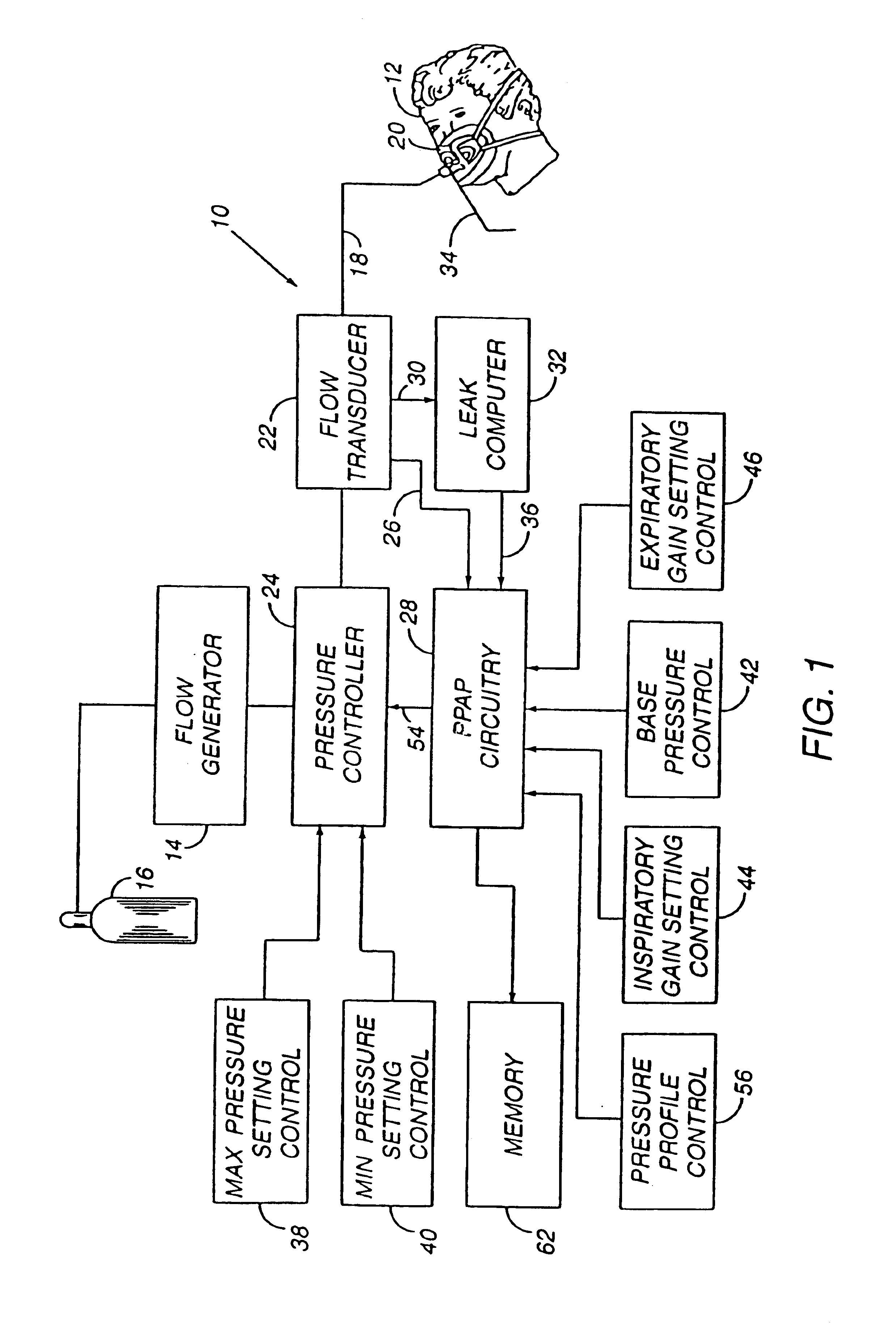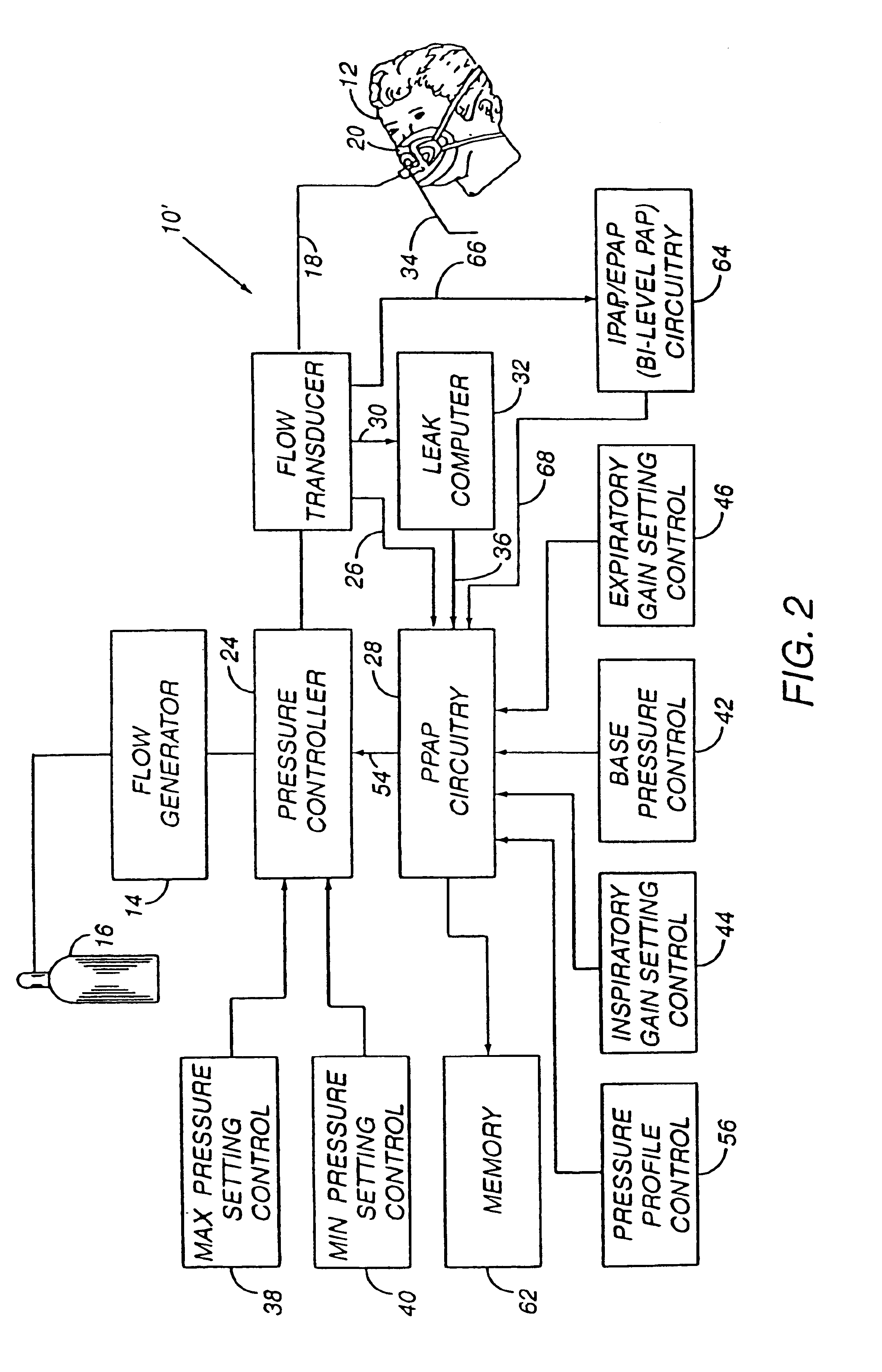Method and apparatus for providing positive airway pressure to a patient
a positive airway pressure and patient technology, applied in the direction of valve details, valve arrangement, operating means/releasing devices of valves, etc., can solve the problems of exposing the patient to pressures that are higher, contributing to the collapse of the patient, and offering far from optimal therapy
- Summary
- Abstract
- Description
- Claims
- Application Information
AI Technical Summary
Benefits of technology
Problems solved by technology
Method used
Image
Examples
Embodiment Construction
[0050]There is generally indicated at 10 in FIG. 1 a proportional positive airway pressure apparatus according to a presently preferred embodiment of the instant invention and shown in the form of a functional block diagram. Apparatus 10 is operable according to a novel process to deliver breathing gas, such as air, oxygen or a mixture thereof, at relatively higher and lower pressures (i.e., generally equal to or above ambient atmospheric pressure) to a patient 12 in proportion to the patient's respiratory flow for treatment of OSAS, snoring, CHF, COPD and other respiratory or cardio-respiratory disorders.
[0051]Apparatus 10 includes a gas flow generator 14, such as a conventional CPAP or bi-level PAP blower, i.e., a centrifugal blower, that receives breathing gas from any suitable source, e.g., a pressurized bottle 16 of oxygen or air, the ambient atmosphere, or a combination thereof. The gas flow from flow generator 14 is passed via a delivery conduit 18 to a breathing appliance or...
PUM
 Login to View More
Login to View More Abstract
Description
Claims
Application Information
 Login to View More
Login to View More - R&D
- Intellectual Property
- Life Sciences
- Materials
- Tech Scout
- Unparalleled Data Quality
- Higher Quality Content
- 60% Fewer Hallucinations
Browse by: Latest US Patents, China's latest patents, Technical Efficacy Thesaurus, Application Domain, Technology Topic, Popular Technical Reports.
© 2025 PatSnap. All rights reserved.Legal|Privacy policy|Modern Slavery Act Transparency Statement|Sitemap|About US| Contact US: help@patsnap.com



